Traveling with your dog can be a rewarding and joyful experience, but it also requires thoughtful preparation to ensure both you and your furry companion have a safe and enjoyable trip. Whether you’re planning a road trip, a flight, or a weekend getaway, following some essential tips can help make the journey smooth and stress-free for everyone. This comprehensive guide will cover everything from packing the right supplies to choosing dog-friendly accommodations, so you can confidently embark on your next adventure with your dog by your side.

1. Plan Ahead and Do Your Research
One of the most important steps in traveling with your dog is planning. Before you hit the road, take time to research your destination and the route you’ll be taking.
- Dog-Friendly Destinations: Not all destinations are equally welcoming to dogs, so choose places where your dog will be comfortable. Many national parks, beaches, and hiking trails allow dogs, but some have restrictions. Websites like BringFido or GoPetFriendly can help you find dog-friendly hotels, restaurants, and attractions. Ensure that wherever you’re going, your dog will have access to safe, pet-friendly spaces to explore.
- Vet Check: Before any long trip, schedule a check-up with your vet to ensure your dog is healthy enough for travel. Make sure your dog is up-to-date on vaccinations, and ask your vet about any preventive medications for fleas, ticks, and heartworms, especially if you’re traveling to areas where these are common.
- Travel Documents: If you’re flying or crossing state or international borders, your dog may need specific documents, including proof of vaccinations or a health certificate. Research the requirements of your destination well in advance to avoid any last-minute issues.

2. Pack the Right Supplies
Just like packing for yourself, you need to make sure you bring everything your dog might need for the trip. Having the right supplies on hand can prevent unexpected problems and keep your dog comfortable throughout the journey.
- Food and Water: Pack enough of your dog’s regular food to last the entire trip, as well as portable food and water bowls. Bring bottled water to avoid potential digestive issues that can arise from drinking unfamiliar tap water. It’s also a good idea to bring treats for training and rewarding good behavior while on the go.
- Comfort Items: Bring your dog’s favorite toys, blanket, or bed to provide familiarity and comfort during the trip. A piece of home can help ease your dog’s anxiety in unfamiliar surroundings.
- Collar, Leash, and ID Tags: Make sure your dog’s collar has up-to-date ID tags with your contact information. If your dog is microchipped, verify that the information on file is correct. A sturdy leash is essential for keeping your dog safe and under control in public spaces.
- Health Essentials: Pack any medications your dog may need, as well as a basic first-aid kit that includes items like bandages, antiseptic wipes, and tweezers. Bring along extra waste bags for cleaning up after your dog.
- Crate or Carrier: If your dog is crate-trained, bringing a travel crate can provide them with a safe and familiar space during the trip. Many airlines and hotels also require crates for dogs. Choose a crate that’s large enough for your dog to stand, turn around, and lie down comfortably.
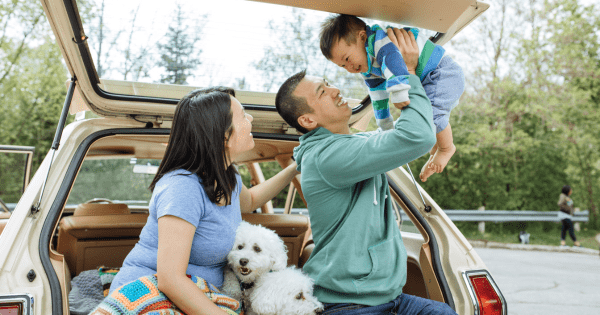
3. Prepare for Car Travel
If you’re traveling by car, taking steps to ensure your dog’s safety and comfort is crucial. Many dogs love car rides, but long trips can be challenging for them.
- Safety First: Keep your dog secure in the car, either in a crate, a seatbelt harness, or a pet barrier that keeps them from moving around while you’re driving. This prevents distractions and protects your dog in case of an accident. Never let your dog ride in the front seat or stick their head out the window, as this can be dangerous.
- Frequent Breaks: Plan to stop every 2-3 hours during long car trips. This allows your dog to stretch, use the bathroom, and get some fresh air. Many rest stops have designated pet areas where dogs can relieve themselves and play for a bit before getting back on the road.
- Car Sickness: Some dogs suffer from motion sickness, especially if they’re not used to car rides. To reduce the chances of car sickness, avoid feeding your dog a large meal right before the trip, and consider shorter practice trips to get them used to being in the car. If your dog is prone to severe motion sickness, talk to your vet about possible medications.
- Comfortable Temperature: Never leave your dog alone in a parked car, especially in extreme temperatures. Even on a mild day, a car can heat up quickly, leading to heatstroke or worse. If you must stop somewhere that isn’t dog-friendly, make arrangements for someone to stay with your dog or use pet-friendly services like dog daycare.
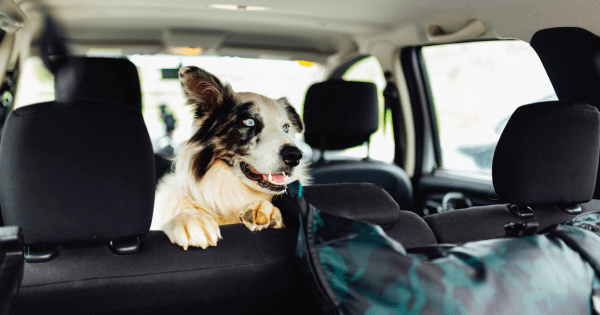
4. Flying with Your Dog
Flying with a dog can be more complicated than traveling by car, but with the right preparation, it’s entirely manageable.
- Check Airline Policies: Every airline has different policies regarding pet travel. Some airlines allow small dogs in the cabin if they fit in a carrier under the seat, while others require dogs to be transported in the cargo hold. Be sure to research the airline’s pet policies ahead of time, including the size and breed restrictions, carrier requirements, and any additional fees.
- Choose a Direct Flight: Whenever possible, book a direct flight to minimize the amount of time your dog spends in transit. Layovers and plane changes can be stressful for dogs, especially if they are traveling in the cargo hold.
- Carrier Training: If your dog will be flying in a carrier, make sure they’re comfortable spending extended periods of time inside it. Let them spend time in the carrier at home, gradually increasing the amount of time they stay inside. Make the experience positive by giving treats or toys while they’re in the carrier.
- Pre-Flight Exercise: Make sure your dog gets plenty of exercise before the flight. A long walk or play session can help burn off excess energy and make them more likely to rest during the flight.
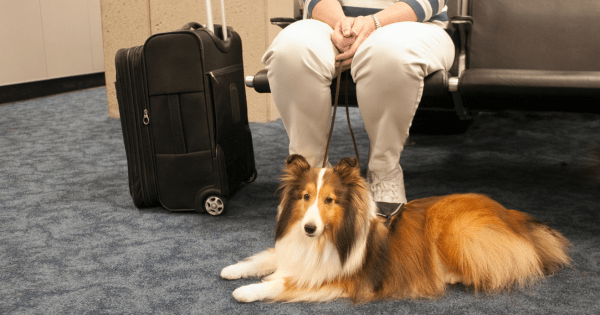
5. Finding Dog-Friendly Accommodations
Staying in a dog-friendly hotel or rental is key to making your trip enjoyable. Luckily, more accommodations are welcoming pets, but it’s important to check the rules before booking.
- Check Pet Policies: Before booking your stay, verify the hotel or rental’s pet policies, including any size or breed restrictions, extra pet fees, and rules about where dogs are allowed on the property. Some places may have designated pet-friendly rooms or areas, while others allow dogs throughout the property.
- Pet-Friendly Amenities: Look for accommodations that offer pet-friendly amenities like designated walking areas, treats, or pet sitting services. Some hotels even have special pet menus, dog beds, and toys available upon request.
- Respect Hotel Rules: Always clean up after your dog and ensure they are well-behaved to avoid additional fees or complaints. If you need to leave your dog alone in the room for a short period, make sure they are comfortable and won’t bark or cause damage.
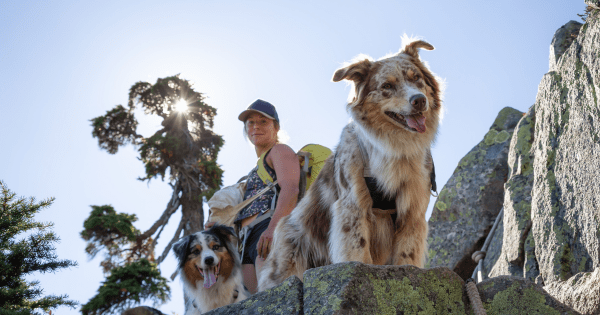
6. Maintain Routine and Comfort
While traveling can be exciting for you, it can be overwhelming for your dog. Maintaining a sense of routine can help reduce anxiety and keep your dog comfortable.
- Stick to a Schedule: Try to keep your dog’s feeding, walking, and playtime schedule as close to normal as possible. Familiar routines provide stability, which can help your dog adjust to new environments.
- Quiet Time: Make sure your dog has a quiet, comfortable space to retreat to when they need a break. Whether it’s their crate, bed, or a cozy corner, giving your dog a space where they feel safe can help them relax during the trip.

7. Socialize and Be Courteous
Traveling with your dog can open up many opportunities for socialization, but it’s important to be mindful of others and ensure your dog is well-behaved.
- Leash and Control: Always keep your dog on a leash in public places, and make sure they are responsive to commands like “sit,” “stay,” and “come.” A well-trained dog is easier to manage and can enjoy more freedom during the trip.
- Respect Other Travelers: Not everyone is comfortable around dogs, so be respectful of other travelers and their space. Keep your dog close to you, and avoid letting them approach strangers or other dogs without permission.
- Dog Etiquette: Make sure your dog is well-socialized and comfortable in new environments before embarking on a trip. Dogs that bark excessively, jump on people, or show signs of aggression can be stressful for both you and those around you.
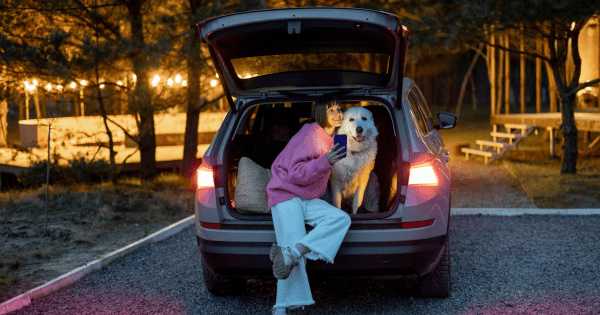
Traveling with your dog can be a memorable experience, but it requires careful planning and consideration of your dog’s needs. By following these top tips, you can ensure a safe, comfortable, and enjoyable trip for both you and your furry companion. From packing the right supplies to choosing dog-friendly accommodations, every step of the journey can be made easier with preparation and attention to detail. With your dog by your side, travel becomes a more rewarding adventure, filled with new experiences and shared moments that you’ll cherish for years to come.
